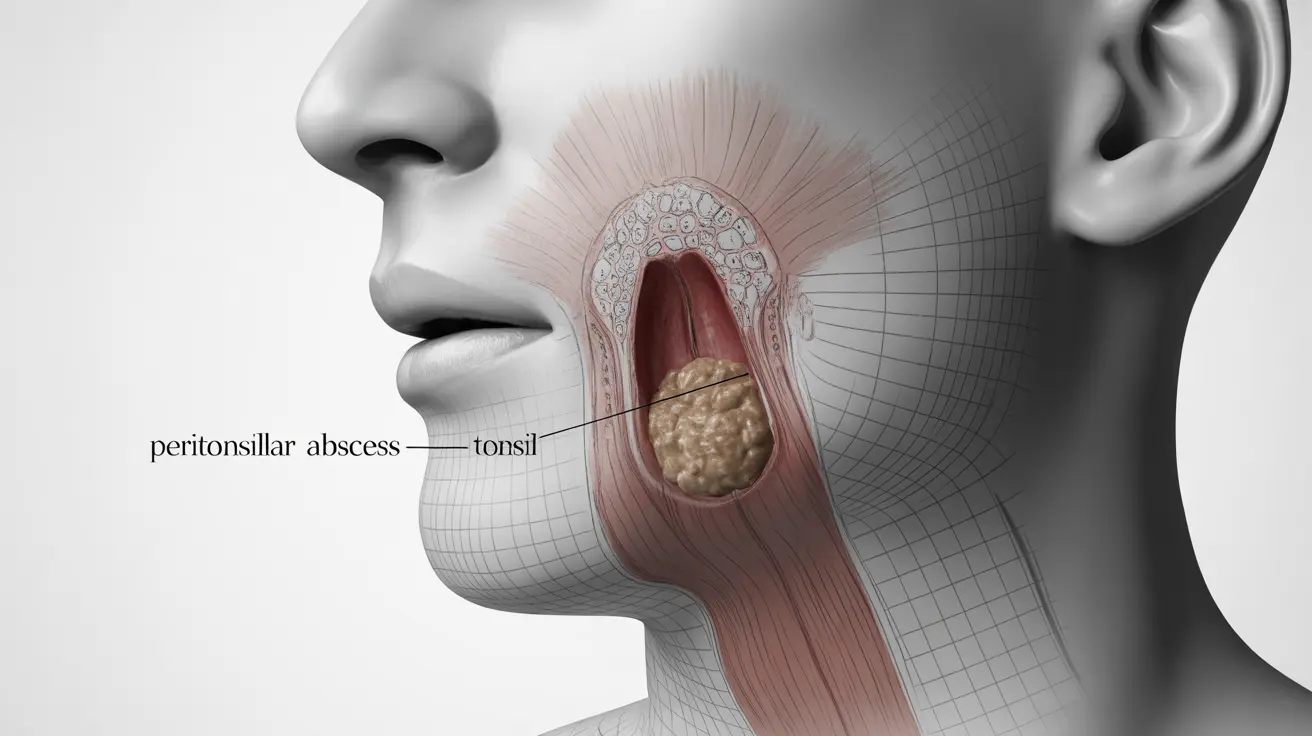A peritonsillar abscess is a serious throat infection that develops between the tonsils and the surrounding tissue. This condition typically occurs as a complication of untreated tonsillitis or strep throat, requiring immediate medical attention. Understanding its symptoms, diagnosis, and treatment options is crucial for preventing severe complications.
While this condition can be alarming, proper medical intervention can effectively resolve the infection and prevent potential complications. Let's explore everything you need to know about peritonsillar abscess, from identifying early warning signs to understanding treatment approaches.
Understanding Peritonsillar Abscess
A peritonsillar abscess forms when bacteria create a pocket of pus between the tonsil and the surrounding throat tissue. This condition most commonly affects teenagers and young adults, though it can occur at any age. The infection typically develops after a case of strep throat or tonsillitis that hasn't been adequately treated.
Key Signs and Symptoms
Recognizing the symptoms of a peritonsillar abscess early is essential for prompt treatment. Common indicators include:
- Severe throat pain, typically worse on one side
- Difficulty opening the mouth (trismus)
- Muffled or "hot potato" voice
- Swelling on one side of the throat
- Difficulty swallowing
- Fever and chills
- Swollen lymph nodes in the neck
- Bad breath
Diagnosis Process
Healthcare providers use several methods to diagnose a peritonsillar abscess:
- Physical examination of the throat and neck
- Assessment of symptoms and medical history
- Needle aspiration to confirm the presence of pus
- CT scan or ultrasound in some cases
- Laboratory tests to identify the specific bacteria involved
Treatment Approaches
Treatment for peritonsillar abscess typically involves a combination of interventions:
Immediate Interventions
The primary treatment options include:
- Needle aspiration to drain the abscess
- Incision and drainage procedure
- Intravenous antibiotics
- Pain management medications
Follow-up Care
After initial treatment, patients typically require:
- Oral antibiotics to complete the course
- Regular follow-up appointments
- Soft diet recommendations
- Adequate hydration
- Rest and recovery time
Prevention Strategies
Several measures can help prevent peritonsillar abscess:
- Complete all prescribed antibiotic courses for throat infections
- Maintain good oral hygiene
- Seek prompt treatment for strep throat or tonsillitis
- Stay hydrated and practice healthy lifestyle habits
- Regular dental check-ups
Frequently Asked Questions
What are the common symptoms and signs of a peritonsillar abscess?
The most common symptoms include severe one-sided throat pain, difficulty opening the mouth, muffled voice, trouble swallowing, fever, and neck swelling. Patients may also experience bad breath and enlarged lymph nodes in the neck.
How is a peritonsillar abscess diagnosed by a doctor?
Doctors diagnose peritonsillar abscess through physical examination, medical history review, and sometimes needle aspiration. In some cases, imaging tests like CT scans or ultrasounds may be necessary for confirmation.
What are the effective treatment options for a peritonsillar abscess?
Treatment typically involves draining the abscess through needle aspiration or incision and drainage, combined with antibiotics. Pain management medications and supportive care are also important components of treatment.
Can a peritonsillar abscess cause breathing problems or other complications?
Yes, if left untreated, a peritonsillar abscess can cause serious complications including airway obstruction, difficulty breathing, and spread of infection to nearby tissues. In rare cases, it can lead to more severe complications requiring emergency intervention.
How can I prevent a peritonsillar abscess from developing after tonsillitis or strep throat?
To prevent peritonsillar abscess, complete all prescribed antibiotic treatments for throat infections, maintain good oral hygiene, seek prompt medical attention for persistent throat symptoms, and follow your healthcare provider's recommendations carefully.




